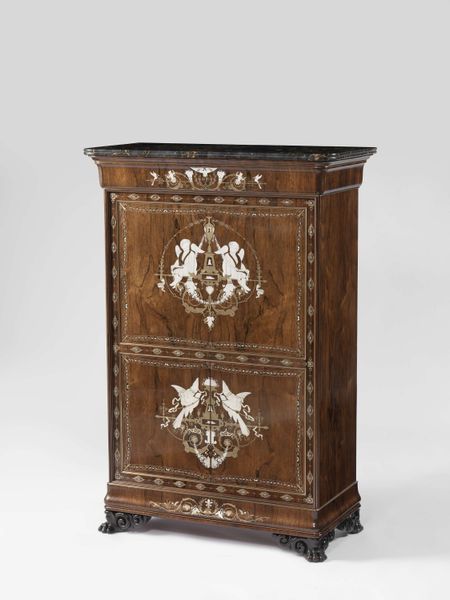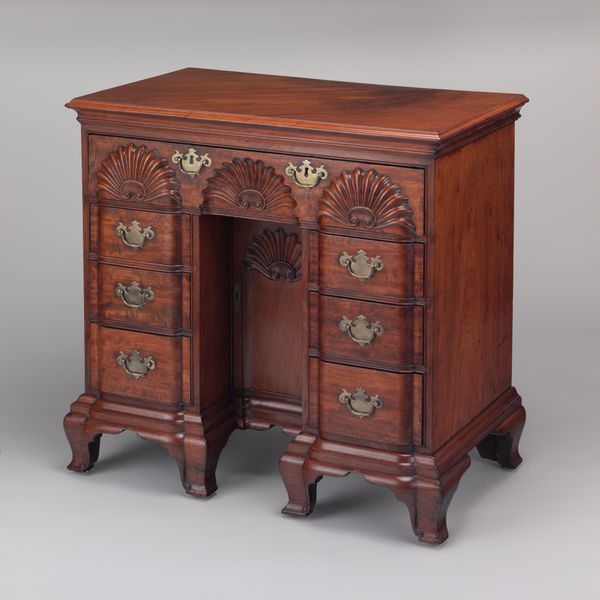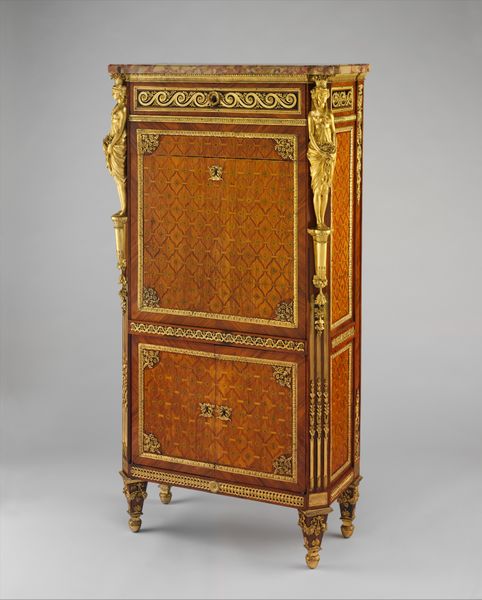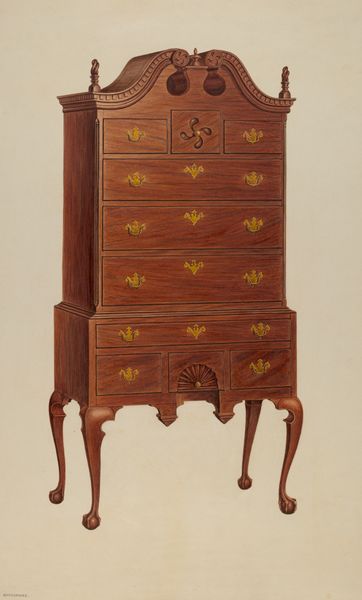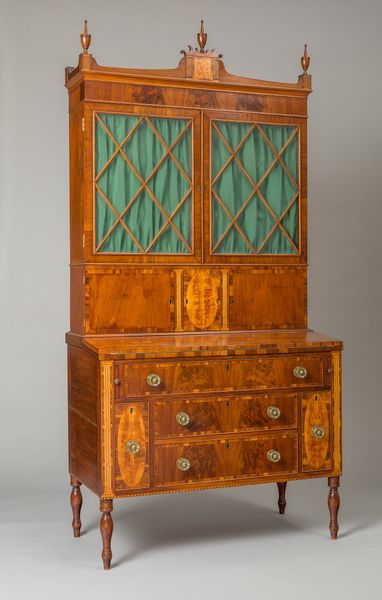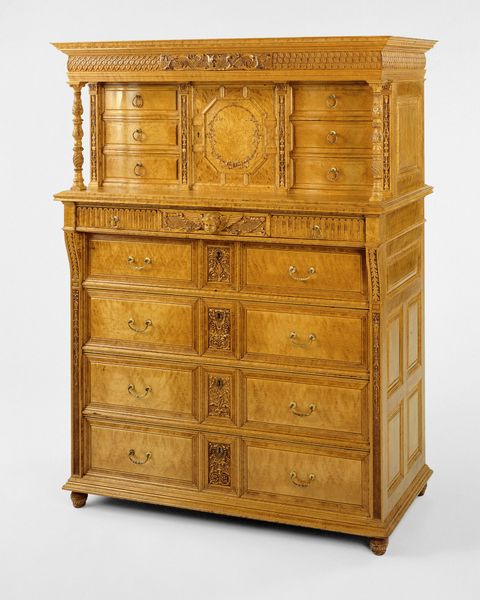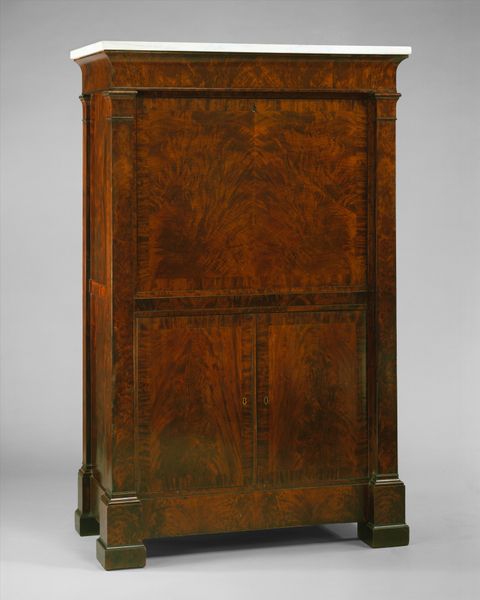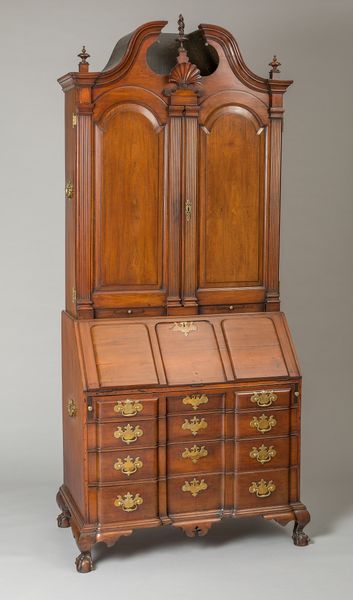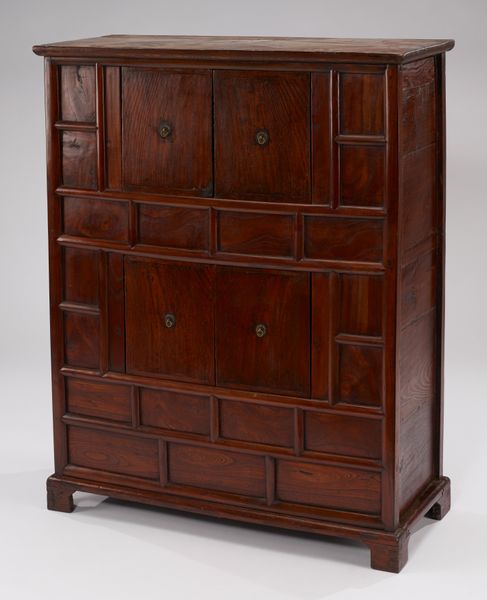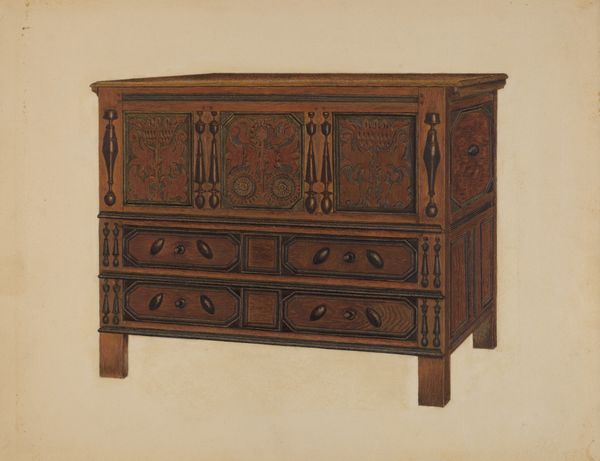
Dimensions: height 187 cm, width 120.5 cm
Copyright: Rijks Museum: Open Domain
Editor: This is the Orchestrion, made around 1815-1825 by Dietrich Nikolaus Winkel. It's primarily made of wood, with brass and other metal elements, and features some beautiful carving. It has such an imposing presence; what are your thoughts? Curator: We must consider this Orchestrion as a testament to material possibilities. The wood, the brass, the carving – all point to the labor involved. Notice the way the different materials are not just combined, but juxtaposed; they don’t simply represent musicality, they embody the very *making* of music. It merges craftsmanship and function. Editor: So you're saying the value isn't just aesthetic, but resides in how it reveals the labor and resources? How does the social context contribute? Curator: Precisely. Imagine the artisanal skill required for each component, the conditions in which these crafts were made – perhaps a small workshop, using tools handed down through generations. It challenges the very idea of high art because it invites us to consider artistry inseparable from everyday practicality and making-do culture of the period. Are those sharp angles and that intricate detailing suggesting to us a social climb? Editor: The geometric and musical motifs almost seem secondary to the sheer *stuff* of it all, now that I’m looking closer. Curator: Indeed! Instead of dismissing it as simply 'decorative,' we might see it as a critical inquiry into the societal obsession with technological advancement and artistry; a true reflection of early 19th-century commodity culture. Editor: This definitely reshapes my view. I was initially drawn to its form, but understanding the material processes opens a deeper discussion. Curator: Agreed. Appreciating the materials shifts our perspective and reminds us of the critical discourse hidden within art and design.
Comments
No comments
Be the first to comment and join the conversation on the ultimate creative platform.
